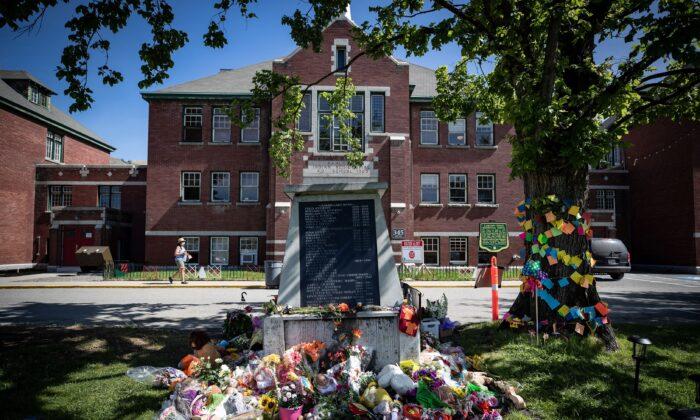The increase in arson attacks against religious institutions in 2021 was likely due to announcements around potential unmarked burials at former residential school sites, according to a new report by the Macdonald-Laurier Institute (MLI). The report, released April 24, represents the first empirical investigation of the spike in arson attacks on religious institutions in Canada since 2021. Author economist Edgardo Sepulveda said statistical analysis of the incidents found the increase in arson attacks was “not religiously motivated.”
The report noted less than 4 percent of the arson incidents over the 2021-23 period have resulted in charges, despite the severity of the crime. It suggested the failure of law enforcement to “effectively investigate and prosecute arsonists” as well as a lack of government response, poses a “significant threat to Indigenous reconciliation efforts in Canada.”
“Arson directed against religious institutions and the lack of a fulsome policy response could undermine support for reconciliation, especially if there is a perception that these crimes are not being addressed with the seriousness they deserve because of their association with the harms of residential schools,” says the report.
Additionally, the report says that any further announcements relating to unverified human remains at these sites are likely to result in more arson incidents at religious institutions.
In 2021, the Tk’emlups te Secwepemc First Nation of Kamloops first announced it had located the remains of 215 “missing children” on the site of a former residential school using ground-penetrating radar. The number of unmarked graves found at Kamloops was later revised to 200. The federal government provided $7.9 million grant for field work. The site has not been excavated and no remains have been found.
Following the initial discovery, there were 16 additional announcements of potential unmarked burials at former residential schools. This was followed by a series of arsons and desecrations at churches. According to an Inquiry of Ministry tabled in the House of Commons in September 2024, there were 90 arson attacks on places of worship in 2021 and 74 attacks in 2022, while from 2015 to 2020 there was an average of 43 police-reported arsons. Residential schools in Canada were run with the participation of Christian churches. The Truth and Reconciliation Commission of Canada said in its 2015 report that an estimated 3,201 children died at these schools, with over 1,000 of those deaths occurring due to tuberculosis, influenza and pneumonia, and 1,040 deaths having unknown causes. The TRC report also noted that it was the practice of most of the schools to bury the bodies of students in school or school-related cemeteries, and not to send the bodies home. Many of these cemeteries have since been abandoned or become vulnerable to accidental disturbance, meaning some could become unmarked burial sites.
Ottawa Must Respond to Arsons, Report Argues
The MLI report says that after analyzing arson trends in other countries like the United States and the United Kingdom, it came to the conclusion that the church arsons in Canada were “not part of any broader international pattern” related to events like COVID-19 and associated health measures.The report said that since the Catholic church featured prominently in debates over residential schools, with 15 of the 17 announcements of potential unmarked burials being at former Catholic-affiliated schools, this could have been another “broad motivating factor” to explain the increase in church arsons in 2021.
Sepulveda said in the report he had “medium-confidence” that a slight increase in arsons between 2018 and 2020 was due to growing awareness of residential schools due to the 2015 TRC report.
Sepulveda said more announcements of potential human remains are likely to occur in the future, given there has been additional government funding for searches.
“If our conceptual framework has any predictive power, it is that such exhumations will result in increased arson at religious institutions,” he said.
In order to prevent future church arsons, the report said the federal government should examine the response the U.S. government took in the 1990s in response to church fires at black-majority congregations in the American South. U.S. President Bill Clinton established the National Church Arson Task Force to oversee the investigation and prosecution of arsons at churches, and signed the Church Arson Prevention Act that made it a federal criminal code violation to damage or deface religious property.
The report said that since arson is already federally criminalized, but fire services are managed by the provinces and municipalities, a coordinated approach across provinces is necessary. It calls for a Canadian task force to work with municipal police, fire services, and indigenous forces, and that the RCMP could help investigate and prosecute arsons involving religious institutions.
The report recommends the establishment of a national database that tracks fire statistics, calling the National Fire Information Database maintained by the Canadian Association of Fire Chiefs “partial, inconsistent, and not up to date.”
It also calls for Statistics Canada to release data around arson at religious institutions on a routine basis, instead of annually.







